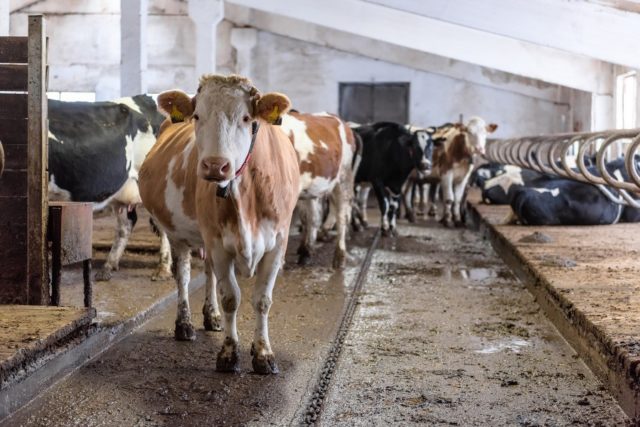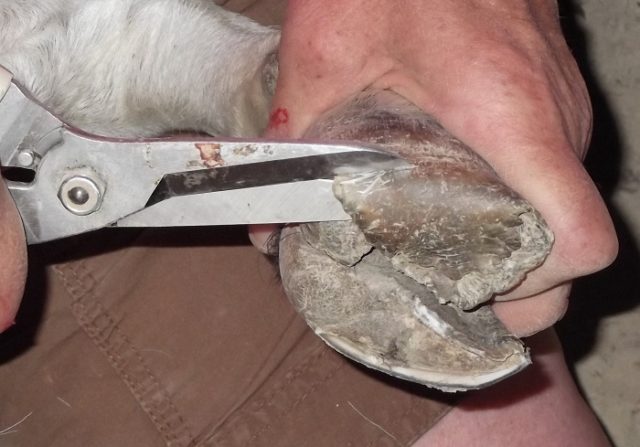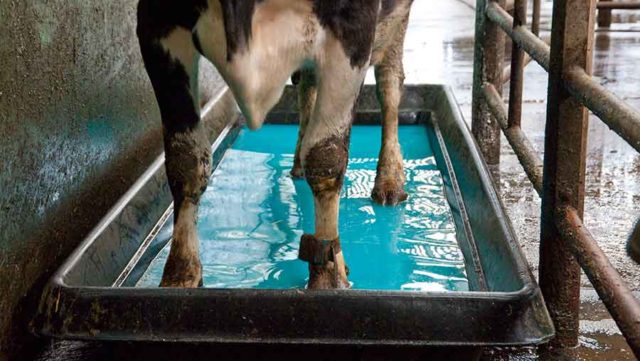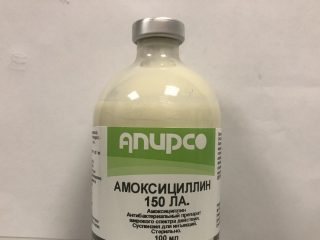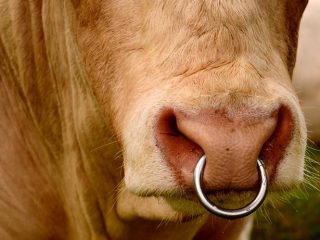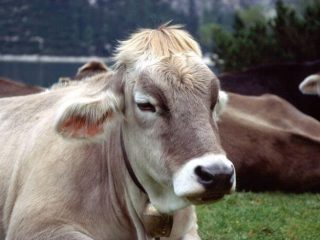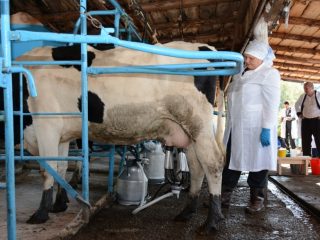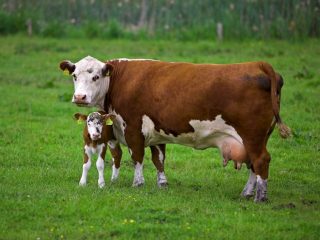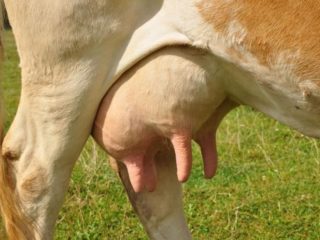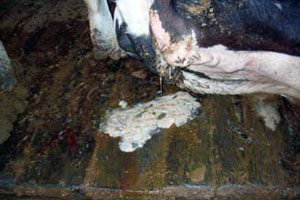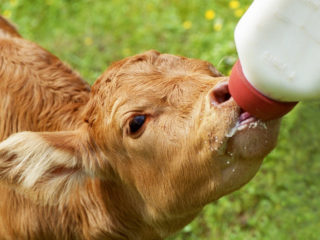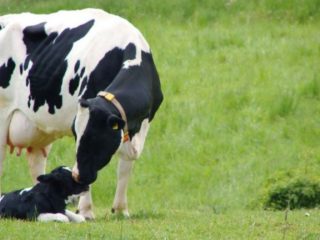Content
Pododermatitis in cattle is an inflammation of the skin at the base of the animal's hoof. The disease can occur in an acute form and become chronic if treatment is delayed or the diagnosis is incorrect.
What is pododermatitis
Pododermatitis is a non-contagious disease that has different types and characteristics depending on the characteristics of the animal’s body, its care, maintenance and feeding. This disease affects the skin of the foot. Sometimes this disease can develop on the horns of a cow.
The main cause of the disease is damage to soft tissues and infection through the wound surface.
The development of the disease also contributes to:
- wounds, ulcers, abrasions and other mechanical damage to the limb of a cow;
- infection;
- dirty stall floors;
- history of rheumatism;
- metabolic disease;
- deficiency of vitamins and microelements in feed;
- unbalanced diet;
- weak immune system.
All these reasons together contribute to the development of pododermatitis in the animal.
Forms of the disease
Inflammatory processes in the hoof area are observed quite often in cows, since the tissue is located under the horny capsule and is often exposed to external influences.
The forms and course of pododermatitis in animals are varied. They are divided into acute and chronic, deep and superficial. According to the area of the lesion - limited and diffuse, according to the degree of the inflammatory process - aseptic and purulent.
Aseptic pododermatitis
Aseptic pododermatitis is a serous, serous-hemorrhagic, serous-fibrous inflammation of the skin of the hoof.
Occurs after injury during grazing, long driving, or transportation of an animal, during which the sole is compressed and injured. Often the damage is caused by thinning of the sole during preventative hoof trimming.
The inflammatory process begins in the vascular layer of the epidermis. As inflammation develops, it moves to the papillary and producing layers. The exudate that accumulates in this case delaminates the hoof capsule, and it undergoes deformation.
In acute pododermatitis, the prognosis is favorable provided that the disease is treated in the initial stage.
Purulent pododermatitis
Purulent pododermatitis is a purulent inflammatory process of the base of the skin of an individual’s hoof. It develops as a complication after aseptic pododermatitis; it also occurs with cracks, wounds, or breaks in the horn of the hoof wall.
With superficial pododermatitis in an animal, purulent inflammation develops in the papillary and productive layers of the epidermis. Exudate exfoliates the horny sole and breaks out.
If the deep layers of the sole are affected, phlegmon of the corolla, damage to the hoof joint, and tendon may develop.
The prognosis is unfavorable if the cow’s medical history includes deep purulent pododermatitis, and therapeutic assistance was not provided on time.
Signs of the disease
The first signs of purulent pododermatitis in cattle include:
- the animal lifts the injured limb, does not step on it, prefers to lie down;
- lameness is noticeable during movement, the individual lags behind the herd.
Upon examination, detachment of the stratum corneum is observed, pus and blood are released from the cracks, and hairs fall out. The inflamed area is swollen, and upon palpation the cow moos, groans, and shudders.
With aseptic pododermatitis, the cow's body temperature rises slightly. If you cut away the dead stratum corneum, bleeding increases and the injured area turns dark red. This is due to rupture of the vessels of the papillae. A cow's appetite is reduced only when diffuse pododermatitis develops on several limbs at the same time.
In severe, advanced forms of pododermatitis, the cow's milk yield is significantly reduced and exhaustion develops.
Diagnostics
A veterinarian will help establish an accurate diagnosis. The owner of a cow may confuse pododermatitis with some diseases that have similar symptoms and external signs, especially at the initial stage of the disease: foot-and-mouth disease, necrobacteriosis, coronary phlegmon and others.
While examining the animal, the doctor will detect increased pulsation in the area of the digital arteries, increased local temperature, an unpleasant odor of exudate, and a sharp pain reaction of the cow to pressure.
A bacterioscopic examination can confirm a preliminary diagnosis. To carry out the analysis, biomaterial is taken from infected areas of the skin of a cow's hoof.
Laboratory testing of the animal’s blood is also carried out. With pododermatitis, the analysis will show an increased level of leukocytes, ESR, hemoglobin may be slightly underestimated.
Treatment of pododermatitis
Before starting treatment, the cow's hoof should be thoroughly cleaned of dirt with a soap solution. Then treat with an antiseptic and perform conduction or circular anesthesia. Apply a tourniquet to the metatarsus area. The veterinarian’s task is to ensure good drainage of purulent exudate and cleansing of necrotic tissue. After treatment, the wound is irrigated with an antibiotic solution and a bandage with ointments is applied. In this case, Vishnevsky, Teymurov, and Konkov pastes are effective. If the healing process is favorable, the bandage is changed after 5 days. Vaseline, tar, and grease should be applied over the bandage.
A good result is achieved by applying a plaster cast. After surgical treatment of the wound surface, treatment is carried out with Ostrovsky powder or other disinfectant. Then a ready-made plaster of non-shedding medical bandage is applied.
Prevention
The basis of prevention is proper maintenance, care and feeding of the cow:
- regular change of litter;
- daily cleaning of the premises;
- timely maintenance of the stall;
- balanced feeding with the addition of vitamins and microelements;
- inspection of animals;
- hoof trimming and cleaning.
Trimming is carried out once a year for the entire dairy herd. When keeping cows on deep bedding - once every 3-4 months, if animals are kept on hard floors - 2 times a year, before and after the grazing season.
Experienced owners give their cows foot baths twice a week. For this you need two large containers. One is filled with water to clean the hooves of manure and dirt, and the second is filled with a disinfectant solution. You can use ready-made concentrates or use solutions of formalin and copper sulfate. The passage of cows through such baths is up to 200 heads.
Conclusion
Pododermatitis in cattle is relatively easy to recognize and quickly treat, provided the owner reacts in a timely manner. However, it is better to prevent it by taking precautions. With proper care and feeding, the development of pododermatitis in a cow is unlikely.
